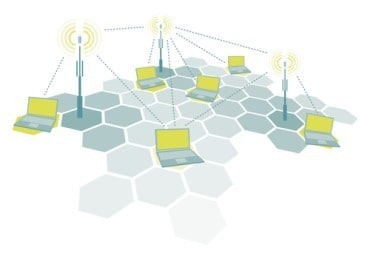
Implementing strong application security measures is key for ensuring the success of IoT projects and for maintaining the integrity and confidentiality of sensitive data.
The Internet of Things (IoT) is rapidly growing and becoming an inseparable part of our daily lives. This makes IoT security more important than ever. A commonly overlooked aspect of security is IoT applications. In addition to securing IoT device firmware, network links, and cloud systems, it is critical to make sure applications deployed on IoT devices follow security practices and cannot be easily compromised.
In this article, I’ll introduce the basics of application security and show important best practices that can help secure IoT applications.
What Is Application Security and Why Is It Important?
Application security is the practice of protecting applications from threats and vulnerabilities that can compromise their confidentiality, integrity, and availability. It is a critical aspect of software development and is essential for ensuring the security and reliability of applications in today’s connected world.
There are several reasons why application security is important:
Data protection
Applications often store, process, and transmit sensitive data, such as financial information, personal data, and intellectual property. Protecting this data from unauthorized access and tampering is critical to maintaining the privacy and security of individuals and organizations.
Prevention of attacks
Applications are frequently targeted by hackers and other cybercriminals who seek to exploit vulnerabilities to access sensitive or valuable data or disrupt the operation of a product. By implementing strong application security measures, it is possible to prevent such attacks and protect against potential losses.
Compliance
Many industries and regulatory bodies have specific requirements for the security of applications, such as the Payment Card Industry Data Security Standard (PCI DSS) for e-commerce applications handling credit card transactions. Failing to meet these requirements can result in fines and other penalties.
Customer trust
Customers expect applications to be secure and will often avoid using applications that are perceived as being insecure. Ensuring the security of applications is, therefore, essential for maintaining customer trust and loyalty.
There are many different approaches to application security, including implementing secure coding practices, testing applications for vulnerabilities, and deploying security controls such as firewalls, intrusion detection systems, and encryption. These measures can help to protect applications from threats and ensure that they remain secure and reliable over time.
IoT Security Threats
IoT Botnets
Botnet owners find IoT devices to be an attractive target. Many devices have weak security configurations, which make them easy to enlist into botnets.
Attackers can infect IoT devices with malware via unprotected ports, phishing scams, or other techniques and incorporate them into IoT botnets used to launch massive cyberattacks. These botnets are often used in distributed denial of service (DDoS) attacks that overwhelm the target network with excessive traffic.
IoT Ransomware
IoT-related ransomware attacks are on the rise as corporate networks are increasingly connected to unsecured Internet of Things devices. Hackers can infect devices with malware that turns them into malicious bots, probes entry points to the network, and retrieve valid credentials from the device’s firmware that can be used to infiltrate the network.
With access to the network via an IoT device, an attacker can exfiltrate proprietary data to the cloud and extort the organization unless a ransom is paid. In some cases, even if organizations pay, ransomware deletes their files anyway. Ransomware affects organizations of all sizes, from small businesses to critical organizations such as government services and food suppliers.
Shadow IoT
IT administrators do not always have control over devices connected to the network. This creates a security threat known as Shadow IoT. Devices with IP addresses, such as digital assistants, fitness trackers, and wireless printers, can increase personal convenience and help employees get their work done, but they don’t always meet an organization’s security standards.
Without adequate visibility into the shadow IoT landscape, IT administrators cannot verify that devices and software have built-in security features or monitor these IoT endpoints for malicious traffic. Once hackers gain access to shadow IoT devices, they can escalate access privileges to reach sensitive information on the compromised corporate network or use the devices for botnets and DDoS attacks.
See also: IoT Security Solutions for Critical Infrastructure
Application Security Best Practices for IoT
Securing IoT applications is not a one-time event. It requires careful planning, taking proactive actions, and regular monitoring.
1. Learn the Most Likely Threats
Threat modeling involves identifying, evaluating, and prioritizing potential vulnerabilities in IoT applications. This makes it possible to recommend security activities, allowing IT managers to integrate IoT applications into their overall security strategy. The security model must evolve to accurately reflect the IoT application’s state.
2. Understand and Prioritize the Risks
Classify and prioritize IoT risks according to their level of concern and implement the relevant acts. Many technology teams neglect this aspect of aligning risk with real business scenarios and potential outcomes. A failure or breach of a single IoT application may seem insignificant to an IT department, but it can have a significant financial impact on a company.
3. Update IoT Apps Regularly
Administrators need to deploy updates to IoT applications as quickly as is feasible to ensure overall network security. Only use approved and verified updates, and when updating apps remotely, use a secure networking approach like a VPN to encrypt all the update streams. A secure public key infrastructure (PKI) enables authentication of devices and systems.
4. Use a Service Mesh
A service mesh is a dedicated infrastructure layer that controls communication between services in a network. A service mesh controls the distribution of service requests within an application. Common functions provided by a service mesh include service discovery, load balancing, encryption, and disaster recovery. A service mesh can make communication between services fast, reliable, and secure.
5. Ensure Network Security
Secure communication protocols, firewalls, and encryption contribute to protecting IoT applications from malicious access. It is important to check devices, standards, and communication protocols used across the network to guarantee security and add IoT applications to regular application security testing processes.
6. Enable Strong Authentication
A robust password protection strategy is critical for IoT applications, and this includes developing secure password generation and update processes. It is critical to change the default passwords of IoT devices and applications. Where possible, multiple authentication factors should be used in addition to passwords. Using the encrypted TLS communication protocol reduces the chance of authentication data being compromised at any point.
7. Encrypt Data in Transit
Protect data from attackers by encrypting data between IoT devices, applications, and backend systems. This includes encrypting data both in transit and at rest and using the PKI security model to ensure that both sender and receiver are authenticated by the system prior to transmission.
8. Secure Control Apps
Systems and applications that can access IoT applications must also be properly secured. This prevents the client (an IoT device or system) from being compromised by an external attack and prevents the attack from propagating downstream.
9. Ensure API Integrations Are Secure
APIs are a popular means of pushing and pulling data between systems and applications. This is another way attackers can connect to IoT applications. When only authorized devices and applications can communicate with an API, threats are easier to detect. IT admins should also use API versioning to identify outdated or duplicate versions of an API and eliminate them.
10. Monitor All IoT Apps
Monitoring your IoT application is the final step in securing it. Monitoring IoT applications allows organizations to detect and respond to potential security issues in a timely manner, improving incident response and minimizing the impact of an attack or breach. It also helps organizations meet compliance requirements and build customer trust by demonstrating a commitment to security.
Conclusion
In conclusion, application security is a critical aspect of software development and is essential for ensuring the security and reliability of IoT applications. By implementing best practices such as understanding the most likely threats, assessing risks, updating IoT apps regularly, using a service mesh, securing control applications, and encrypting data in transit, organizations can protect against threats and vulnerabilities and maintain the trust of customers and stakeholders.
Monitoring IoT apps is also crucial for detecting and responding to potential security issues in a timely manner. Implementing strong application security measures is key for ensuring the success of IoT projects and for maintaining the integrity and confidentiality of sensitive data.































